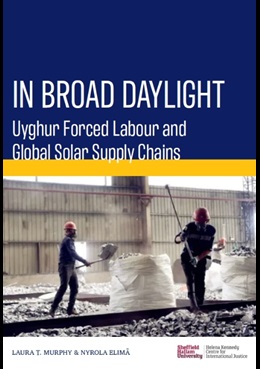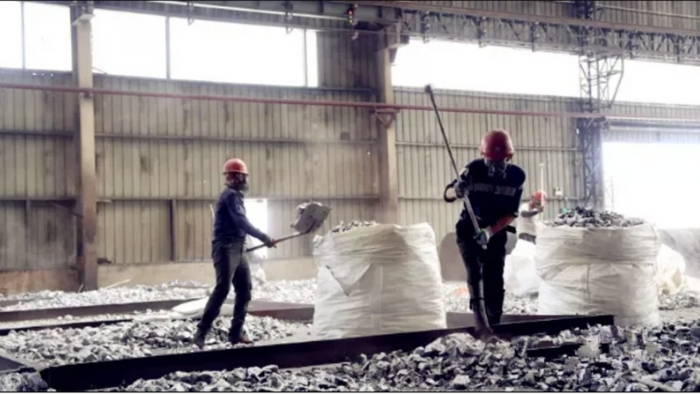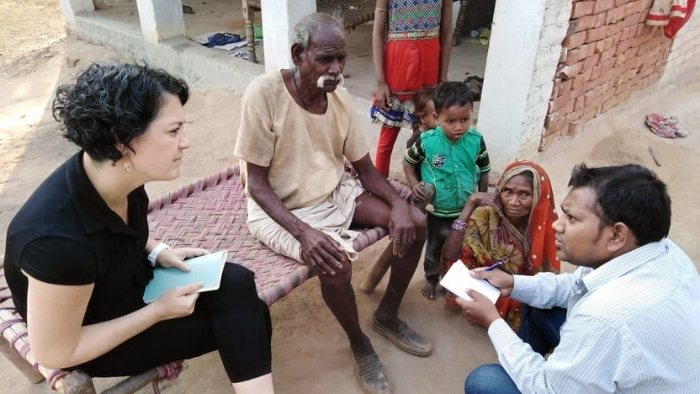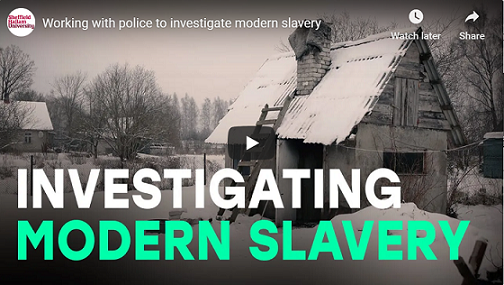 The People’s Republic of China (PRC) has placed millions of indigenous Uyghur and Kazakh citizens from the Xinjiang Uyghur Autonomous Region (XUAR or Uyghur Region) into what the government calls “surplus labour” (富余劳动力) and “labour transfer” (劳动力转移)programmes. An official PRC government report published in November 2020 documents the “placement” of 2.6 million minoritised citizens in jobs in farms and factories within the Uyghur Region and across the country through these state-sponsored “surplus labour” and “labour transfer” initiatives. The government claims that these programmes are in accordance with PRC law and that workers are engaged voluntarily, in a concerted government-supported effort to alleviate poverty. However, significant evidence – largely drawn from government and corporate sources – reveals that labour transfers are deployed in the Uyghur Region within an environment of unprecedented coercion, undergirded by the constant threat of re-education and internment. Many indigenous workers are unable to refuse or walk away from these jobs, and thus the programmes are tantamount to forcible transfer of populations and enslavement.
The People’s Republic of China (PRC) has placed millions of indigenous Uyghur and Kazakh citizens from the Xinjiang Uyghur Autonomous Region (XUAR or Uyghur Region) into what the government calls “surplus labour” (富余劳动力) and “labour transfer” (劳动力转移)programmes. An official PRC government report published in November 2020 documents the “placement” of 2.6 million minoritised citizens in jobs in farms and factories within the Uyghur Region and across the country through these state-sponsored “surplus labour” and “labour transfer” initiatives. The government claims that these programmes are in accordance with PRC law and that workers are engaged voluntarily, in a concerted government-supported effort to alleviate poverty. However, significant evidence – largely drawn from government and corporate sources – reveals that labour transfers are deployed in the Uyghur Region within an environment of unprecedented coercion, undergirded by the constant threat of re-education and internment. Many indigenous workers are unable to refuse or walk away from these jobs, and thus the programmes are tantamount to forcible transfer of populations and enslavement.
It is critical that we examine the particular goods that are being produced as a result of this forced labour regime. This paper focuses on just one of those industries – the solar energy industry – and reveals the ways forced labour in the Uyghur Region can pervade an entire supply chain and reach deep into international markets. We concluded that the solar industry is particularly vulnerable to forced labour in the Uyghur Region because:
- 95% of solar modules rely on one primary material – solar-grade polysilicon.
- Polysilicon manufacturers in the Uyghur Region account for approximately 45% of the world’s solar-grade polysilicon supply.
- All polysilicon manufacturers in the Uyghur Region have reported their participation in labour transfer programmes and/or are supplied by raw materials companies that have.
- In 2020, China produced an additional 30% of the world’s polysilicon on top of that produced in the Uyghur Region, a significant proportion of which may be affected by forced labour in the Uyghur Region as well.
In the course of this research, we identified:
- 11 companies engaged in labour transfers
- 4 additional companies located within industrial parks that have accepted labour transfers
- 90 Chinese and international companies whose supply chains are affected
This report seeks to increase the knowledge base upon which the solar industry determines its exposures to forced labour in the Uyghur Region. We investigated the entire solar module supply chain from quartz to panel to better understand the extent to which forced labour in the Uyghur region affects international value chains. The examples of engagement in these programs are meant to provide stakeholders with the evidence base upon which to judge risk of exposure to forced labour in the solar supply chain.
Evidence base
The evidence of forced labour in the Uyghur Region is expansive and growing. The Forced Labour Lab is committed to making evidence and data regarding the oppression of minoritised citizens in the Uyghur region available to the public.
The evidence presented in the report is all publicly available. However, due to the frequency with which corporate reports, news, and social media pages are removed from the web, all websites referred to in the paper have been archived through the Archive.Today website. Archived versions of pdfs are only screenshots of the website, so those materials are collected here. Materials presented below can be used to understand the industry better and illustrate the investment of solar/polysilicon industry in Xinjiang.








